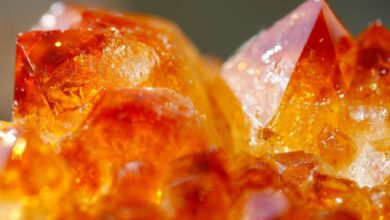The Intricate Dance: Vector Strokes in a Raster World

Ever marveled at the crisp, scalable graphics on your screen – the perfectly smooth curves of an SVG icon, or the intricate details of a vector illustration that looks pristine no matter how much you zoom in? Behind that visual finesse lies a significant computational challenge. We’re talking about transforming abstract vector instructions into the millions of pixels your GPU renders, often at lightning speed. It’s not as simple as drawing a line; it’s about precisely outlining complex shapes with varying thicknesses, end styles, and join types, all while meeting demanding performance targets.
For decades, graphics engineers have wrestled with this fundamental problem: how do you efficiently convert a ‘stroke’ – essentially, a path with a specified width – into a ‘fill’ – a polygonal shape that the GPU can easily rasterize? It’s a crucial step in displaying any vector graphic, and it often becomes a bottleneck in high-performance applications. That’s why the work of researchers like Raph Levien and Arman Uguray on data-parallel stroke-to-fill conversion on modern GPUs is so compelling. They’ve tackled this beast head-on, delivering solutions that are not just clever, but genuinely practical for real-time rendering.
The Intricate Dance: Vector Strokes in a Raster World
Think about a simple curved line in a vector drawing program. You define it with a few control points, perhaps a cubic Bézier curve. Then, you decide it should have a specific thickness – say, 5 pixels – and maybe a rounded end. Suddenly, that single mathematical curve needs to become a complex polygonal outline. The GPU, fundamentally a rasterization machine, needs polygons to fill with color, not abstract mathematical descriptions.
This “stroke-to-fill” conversion is where things get complicated. A simple thickening isn’t enough; the outline must accurately reflect the desired stroke width everywhere along the curve. If the curve bends sharply, the inner and outer edges behave differently. If two segments meet, their “join” needs to be handled precisely, whether it’s a sharp miter, a clean bevel, or a smooth round connection. And at the ends of a subpath, you have “caps” – butt, square, or round – each requiring specific geometry. Doing all this on the CPU for complex paths, especially hundreds of thousands of them, would bring any application to a crawl.
Why Not Just Draw Thick Lines?
You might wonder, why can’t we just draw a line that’s N pixels wide? The problem is that a thick line doesn’t give us the control needed for proper vector rendering. Imagine two thick line segments meeting at an angle. If you just draw two rectangles and overlap them, you’ll get an ugly, unjoined mess. We need a continuous, single outline that accurately represents the entire stroked path as a single polygon. This is where the concept of “strong correctness” comes in – ensuring the outline is always perfectly formed, even in tricky areas like sharp corners or self-intersecting curves, where “cusps” can appear.
Unlocking GPU Power: A Data-Parallel Conversion Pipeline
The core innovation here lies in fully leveraging the massive parallel processing power of modern GPUs. The goal: offload virtually all of the stroke-to-fill conversion work from the CPU to the GPU. This isn’t just a minor optimization; it’s a paradigm shift that allows for real-time rates with a vast number of inputs.
The architecture employs a compute shader, a flexible GPU program, arranged as a 1-dimensional grid of threads. Each thread is assigned to process a single path segment. This means if you have a path made of 100 segments, 100 GPU threads can theoretically work on them simultaneously. It’s a beautiful example of data-parallelism, where the same operation is applied to many independent pieces of data concurrently. This approach is highly portable, designed to run on general-purpose GPU compute primitives supported by all major modern graphics APIs like Metal, Vulkan, D3D12, and WebGPU.
Euler Spirals: Precision Meets Practicality
One of the mathematical linchpins of this system is the use of Euler spirals to approximate cubic Bézier curves. Béziers are great for design, but their parallel curves (which define the stroke’s outline) can be complex. Euler spirals, on the other hand, have a linearly changing curvature, making them well-suited for both fitting Béziers and simplifying the generation of their parallel offsets and subsequent flattening into polylines.
The process isn’t a one-and-done deal. The system uses an adaptive subdivision technique. If a Bézier segment’s approximation by an Euler spiral isn’t within a desired error tolerance, the segment is iteratively subdivided in half until it meets the standard. Traditionally, this kind of subdivision is handled recursively, but GPU compute shaders famously don’t support recursion. The solution here is wonderfully clever: unrolling the recursion into an iterative loop by encoding the entire state of the “stack” into just two scalar values. This avoids expensive memory operations and keeps the GPU threads humming efficiently.
This system doesn’t just aim for “weak correctness” (a visually acceptable outline). It also strives for “strong correctness” by outputting special “evolute patches” in regions of high curvature or where cusps would otherwise break the continuity of the outline. This ensures that even in the most challenging geometries, the stroke outline remains perfectly formed and connected.
Orchestrating Data: Efficient Encoding and Output
Getting the data into this parallel pipeline efficiently is just as critical as the processing itself. An SVG path, for example, isn’t just a list of coordinates; it’s a sequence of commands (lineto, curveto, moveto, closepath) along with styles (stroke width, color, cap/join types) and transformations. Feeding this variable-length, multi-faceted data to thousands of independent GPU threads requires smart organization.
The solution involves encoding paths into compact, parallel streams: a “path tag” stream and a “path data” stream for coordinates. Additional streams handle transforms and styles. Critically, these streams don’t just store raw data; the “path tag” stream also stores small “offset increments.” By computing inclusive prefix sums on the GPU (a parallel operation known as a “scan”), each thread can quickly determine its exact position and reference the correct data in all the parallel streams. This “tag monoid” structure is a testament to sophisticated GPU programming, moving complex data lookup logic off the CPU entirely.
The “Line Soup” and What Comes Next
After all this processing, what does a GPU thread actually output? It outputs a collection of line segments – potentially hundreds of thousands of them – that approximate the final stroke outline. These segments are stored in a GPU storage buffer. Because the threads process segments in parallel and don’t communicate with each other during this stage, the output line segments are unordered. This raw, unordered collection is affectionately termed “line soup.”
This “line soup” isn’t the final rendered image, but a crucial intermediate step. Downstream GPU stages then take this line soup. For example, in a tile-based rasterizer, these unordered segments might be spatially sorted into a grid of 16×16 pixel tiles, making subsequent pixel coverage calculations much more efficient. The final rendering stage can then compute pixel coverage for the outlined polygons, apply colors or gradients, and present the beautifully rendered vector graphic on your screen.
Pushing the Boundaries of Real-Time Graphics
The work on data-parallel stroke-to-fill conversion, exemplified by the techniques from Levien and Uguray, represents a significant leap forward in high-performance graphics. By combining mathematical elegance (Euler spirals for precision) with ingenious engineering (data-parallel processing, non-recursive subdivision, compact input encoding), it addresses a core challenge in vector rendering with remarkable efficiency. This isn’t just academic; it directly translates to the crisp, responsive, and infinitely scalable graphics we expect from modern applications and the web.
The next time you admire a perfectly smooth SVG animation or a vector-based interface that scales flawlessly, take a moment to appreciate the underlying computational prowess. It’s a powerful reminder of how innovative algorithms and clever GPU utilization continue to push the boundaries of what’s possible in real-time, high-fidelity digital experiences, making our visual world richer and more dynamic.





